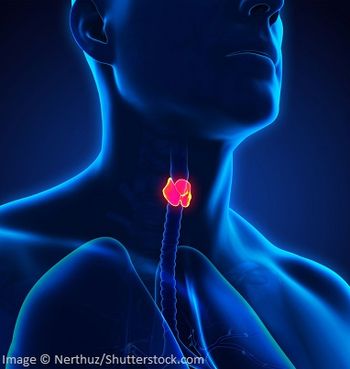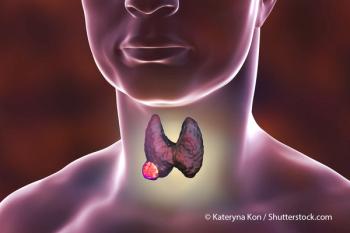
Study Validates ATA Ultrasonographic Thyroid Nodule Risk Assessment
High-risk ultrasound findings strongly indicate that thyroid nodules are malignant, even when nodules are cytologically indeterminate following find needle aspiration.
[[{"type":"media","view_mode":"media_crop","fid":"52177","attributes":{"alt":"Image © Bork / Shutterstock.com","class":"media-image","id":"media_crop_572832058727","media_crop_h":"0","media_crop_image_style":"-1","media_crop_instance":"6473","media_crop_rotate":"0","media_crop_scale_h":"0","media_crop_scale_w":"0","media_crop_w":"0","media_crop_x":"0","media_crop_y":"0","title":"Image © Bork / Shutterstock.com","typeof":"foaf:Image"}}]]
High-risk ultrasonographic findings strongly indicate that thyroid nodules are malignant, even when nodules are cytologically indeterminate following find needle aspiration (FNA), according to a prospective study presented at the 86th Annual Meeting of the American Thyroid Association (ATA), held September 21-25 in Denver, Colorado. The results were
“This prospective study validates the new ATA sonographic pattern risk assessment for selection of thyroid nodules for [ultrasound] FNA based upon Bethesda cytology and surgical pathology results,” reported Alice Tang, MD, and coauthors.
The
The research team studied ultrasound characteristics of 211 thyroid nodules that had been selected for FNA, assessing cytology using the Bethesda System for Reporting Thyroid Cytopathology. Surgical pathology and cytology reports were used to determine malignancy, and these findings were then compared to ATA sonographic risk estimates.
Examining results for 199 patients (157 women and 42 men), the authors found that cytologically indeterminate nodules with sonographic patterns deemed to be “high risk” (4% of nodules assessed) under the ATA risk assessment system, were indeed determined to be malignant after surgical excision. All of these high-risk nodules were determined to be malignant, compared to nodules in the sonographic intermediate- and low-risk category, 21% and 17% of which turned out to be malignant; only 1% of nodules in the “very low” sonographic risk category were malignant (P = .003).
Nodule size was inversely associated with ATA sonographic risk assessment, with lower-risk nodules being significantly larger than high-risk nodules (P < .0001). Nodule classifications by Bethesda criteria also varied significantly by ATA ultrasound risk assessment categories (P < .0001), the researchers reported.
Reference
Tang A, Falciglia M, Yang H, et al. Highlighted oral 3. Validation of ATA ultrasound risk assessment of thyroid nodules. Thyroid. 2016;26(suppl 1).
Newsletter
Stay up to date on recent advances in the multidisciplinary approach to cancer.


















































































